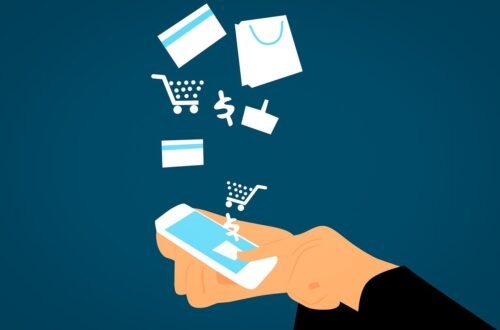In today’s fast-paced digital world, businesses are constantly looking for innovative ways to engage with their clients and customers. Enter interactive e-cards, the modern approach to business communication. Gone are the days of static, lifeless emails or traditional paper cards. With interactive e-cards, businesses can now create personalized and engaging experiences that captivate recipients and leave a lasting impression. Whether it’s sending holiday greetings, announcing a new product launch, or expressing gratitude to valued clients, designing interactive e-cards for business offers a dynamic and memorable way to connect and communicate.

This image is property of images.unsplash.com.
Importance of Interactive E-Cards
In today’s fast-paced business world, effective communication is key to success. Interactive e-cards provide a modern and engaging way for businesses to connect with their target audience. They go beyond traditional static cards by incorporating interactive elements that grab the recipient’s attention and create memorable experiences. By utilizing interactive e-cards, businesses can strengthen their brand image and stand out from the competition.
Enhancing business communication
Interactive e-cards serve as a powerful tool for enhancing business communication. Unlike traditional paper cards or email greetings, interactive e-cards allow businesses to convey their messages in a more dynamic and engaging format. By utilizing animations, games, and multimedia elements, businesses can capture the recipient’s attention and ensure that their messages are delivered effectively.
Creating memorable experiences
When it comes to business communication, standing out and making a lasting impression is crucial. Interactive e-cards provide businesses with the opportunity to create unique and memorable experiences for their recipients. By incorporating interactive elements such as animations, games, and videos, businesses can leave a lasting impression on their audience, increasing the chances of their messages being remembered.
Strengthening brand image
A strong brand image is essential for the success of any business. Interactive e-cards offer a creative and innovative way for businesses to showcase their brand identity. By creating visually appealing designs and incorporating interactive elements that align with their brand image, businesses can leave a positive and lasting impression on their target audience, strengthening their brand image and increasing brand recognition.
Benefits of Using Interactive E-Cards
Cost-effectiveness
One of the key benefits of using interactive e-cards is their cost-effectiveness. Traditional paper cards often require printing, postage, and mailing costs, which can quickly add up, especially for businesses with a large customer base. Interactive e-cards, on the other hand, can be created and distributed digitally, eliminating the need for printing and mailing expenses. This makes it a more affordable option for businesses looking to communicate with their audience in a creative and engaging way.
Easy customization
Interactive e-cards offer businesses the flexibility to easily customize their messages and designs. Unlike traditional paper cards, which often have limited space for personalized messages, interactive e-cards allow businesses to include personalized messages, tailored to each recipient. This adds a personal touch to the communication and helps businesses to establish a stronger connection with their audience.
Increased engagement and response rates
Interactive e-cards are designed to be engaging and interactive, which leads to increased engagement and response rates. By incorporating interactive elements such as animations, games, and puzzles, businesses can capture the attention of their target audience and encourage them to actively participate in the content. This not only creates a more enjoyable experience for the recipient but also increases the chances of their messages being read and responded to.
Designing Interactive E-Cards
Designing interactive e-cards requires careful consideration and planning to ensure they effectively convey the intended message and engage the recipient. Here are some key factors to keep in mind when designing interactive e-cards:
Choose a suitable platform
The first step in designing interactive e-cards is to choose a suitable platform that provides the necessary tools and features. There are many platforms available that offer pre-designed templates and interactive elements, making it easier for businesses to create their e-cards without the need for extensive design or coding skills. It is important to evaluate different platforms and choose one that aligns with your business’s needs and objectives.
Create visually appealing designs
Visual appeal plays a crucial role in capturing the recipient’s attention and conveying your message effectively. When designing interactive e-cards, it is important to use visually appealing graphics, color schemes, and fonts that align with your brand identity. The design should be clean, professional, and visually appealing, ensuring that the recipient is enticed to engage with the e-card.
Incorporate interactive elements
The key feature of interactive e-cards is the inclusion of interactive elements. These can range from animations and illustrations to games, puzzles, videos, and audio integration. The choice of interactive elements should be based on the objectives of the e-card and the preferences of the target audience. Careful consideration should be given to the usability and user experience of the interactive elements to ensure they enhance the overall communication process.
Types of Interactive Elements
The success of interactive e-cards is largely dependent on the types of interactive elements incorporated. Here are some popular interactive elements that can be used in e-cards:
Animated graphics and illustrations
Animations and illustrations can be used to add visual interest and create a dynamic experience. They can be used to tell a story, demonstrate a product or service, or simply add an element of fun.
Interactive games or puzzles
Games and puzzles are a great way to engage the recipient and encourage active participation. They can range from simple quizzes and challenges to more complex games that require problem-solving skills.
Video and audio integration
Videos and audio elements can be used to convey information, showcase products or services, or share testimonials. They add a multimedia aspect to the e-card, making it more engaging and memorable.

This image is property of images.unsplash.com.
Customization Options
Customization is a key aspect of interactive e-cards, as it allows businesses to tailor their messages and designs to their specific needs. Here are some customization options to consider:
Personalized messages
Personalization is a powerful tool for creating a connection with the recipient. Interactive e-cards provide businesses with the option to include personalized messages, addressing the recipient by name or including specific details that are relevant to them. This adds a personal touch to the communication and increases the chances of the recipient engaging with the e-card.
Tailoring e-card design to brand identity
Consistency is important when it comes to brand identity. Businesses should ensure that the design of their interactive e-cards aligns with their brand identity, using colors, fonts, and graphics that are consistent with their brand guidelines. This helps to reinforce brand recognition and create a cohesive brand experience.
Adding company logo and contact information
Including the company logo and contact information is essential for reinforcing brand identity and providing a way for the recipient to reach out to the business. Interactive e-cards should include the logo at a prominent position and provide contact information such as phone numbers, email addresses, and social media handles.
Best Practices for Using Interactive E-Cards
To maximize the effectiveness of interactive e-cards, businesses should follow these best practices:
Consider the recipient’s preferences
When designing interactive e-cards, it is important to consider the preferences and interests of the target audience. This includes factors such as age, industry, and cultural background. By tailoring the content and interactive elements to match the recipient’s preferences, businesses can increase the chances of engagement and response.
Ensure compatibility across devices
In today’s mobile-driven world, it is crucial to design interactive e-cards that are compatible with a wide range of devices, including smartphones, tablets, and desktop computers. This ensures that the e-cards can be accessed and enjoyed by the recipient regardless of the device they are using.
Track and analyze effectiveness
To measure the effectiveness of interactive e-cards, businesses should track and analyze metrics such as open rates, click-through rates, and response rates. This data can provide valuable insights into the effectiveness of the e-cards and help businesses make improvements for future campaigns.

This image is property of images.unsplash.com.
Successful Use Cases
Interactive e-cards can be used in various business scenarios to enhance communication and engagement. Here are some successful use cases:
Invitations and event announcements
Interactive e-cards can be used to invite guests to events such as product launches, conferences, or corporate parties. By incorporating interactive elements and personalized messages, businesses can create anticipation and excitement among the recipients.
Holiday greetings and celebrations
During holidays and special occasions, businesses can use interactive e-cards to send personalized greetings and well wishes to their customers and partners. They can incorporate festive designs, animations, and multimedia elements to create a joyful and memorable experience.
Promotional campaigns and sales offers
Interactive e-cards are an effective way to promote products, services, or special offers. By using interactive elements such as games, quizzes, or videos, businesses can engage their audience and encourage them to take advantage of the promotion.
Challenges and Solutions
While interactive e-cards offer numerous benefits, businesses may encounter some challenges when designing and implementing them. Here are some common challenges and their solutions:
Technical limitations and compatibility issues
Different devices and platforms may have technical limitations or compatibility issues that can affect the performance of interactive e-cards. To overcome this challenge, businesses should thoroughly test their e-cards on different devices and platforms to ensure seamless functionality and compatibility.
Design complexity and resource allocation
Designing interactive e-cards with engaging and visually appealing elements can be time-consuming and require the allocation of design resources. Businesses should plan accordingly and allocate sufficient time and resources to create high-quality e-cards that effectively convey their message and engage the recipient.
Ensuring accessibility for all recipients
Not all recipients may have access to devices or internet connections that can support the full functionality of interactive e-cards. To ensure accessibility for all recipients, businesses should provide alternative options such as text-based versions or PDF downloads that can be accessed by a wider audience.
Future Trends in Interactive E-Cards
As technology advances, interactive e-cards are expected to evolve and incorporate new features. Here are some future trends to look out for:
Augmented reality integration
Augmented reality (AR) is becoming increasingly popular in various industries. In the future, interactive e-cards may incorporate AR elements, allowing recipients to experience virtual objects and engage with them in real-time, creating a more immersive and interactive experience.
Artificial intelligence-powered personalization
Artificial intelligence (AI) can be used to analyze recipient data and personalize the content of interactive e-cards based on individual preferences and interests. This will enable businesses to create highly targeted and personalized e-cards that resonate with their audience on a deeper level.
Seamless integration with social media
Social media platforms have become an integral part of business communication. In the future, interactive e-cards may seamlessly integrate with social media platforms, allowing recipients to interact with the e-cards directly within their social media feeds, increasing engagement and reach.
Conclusion
In today’s digital age, interactive e-cards offer businesses a modern and engaging approach to communication. By utilizing interactive elements, businesses can enhance their communication, create memorable experiences, and strengthen their brand image. The benefits of using interactive e-cards include cost-effectiveness, easy customization, and increased engagement and response rates. When designing interactive e-cards, businesses should choose a suitable platform, create visually appealing designs, and incorporate interactive elements that align with their objectives. Customization options such as personalized messages, tailoring the design to brand identity, and including company logo and contact information further enhance the effectiveness of interactive e-cards. Following best practices, considering the recipient’s preferences, ensuring compatibility across devices, and tracking effectiveness are essential for successful implementation. Use cases such as invitations, holiday greetings, and promotional campaigns demonstrate the versatility of interactive e-cards. Despite challenges such as technical limitations and design complexity, the future of interactive e-cards promises exciting trends such as augmented reality integration, artificial intelligence-powered personalization, and seamless integration with social media. Embrace the power of interactive e-cards to modernize your business communication, stand out, and make a lasting impression.





